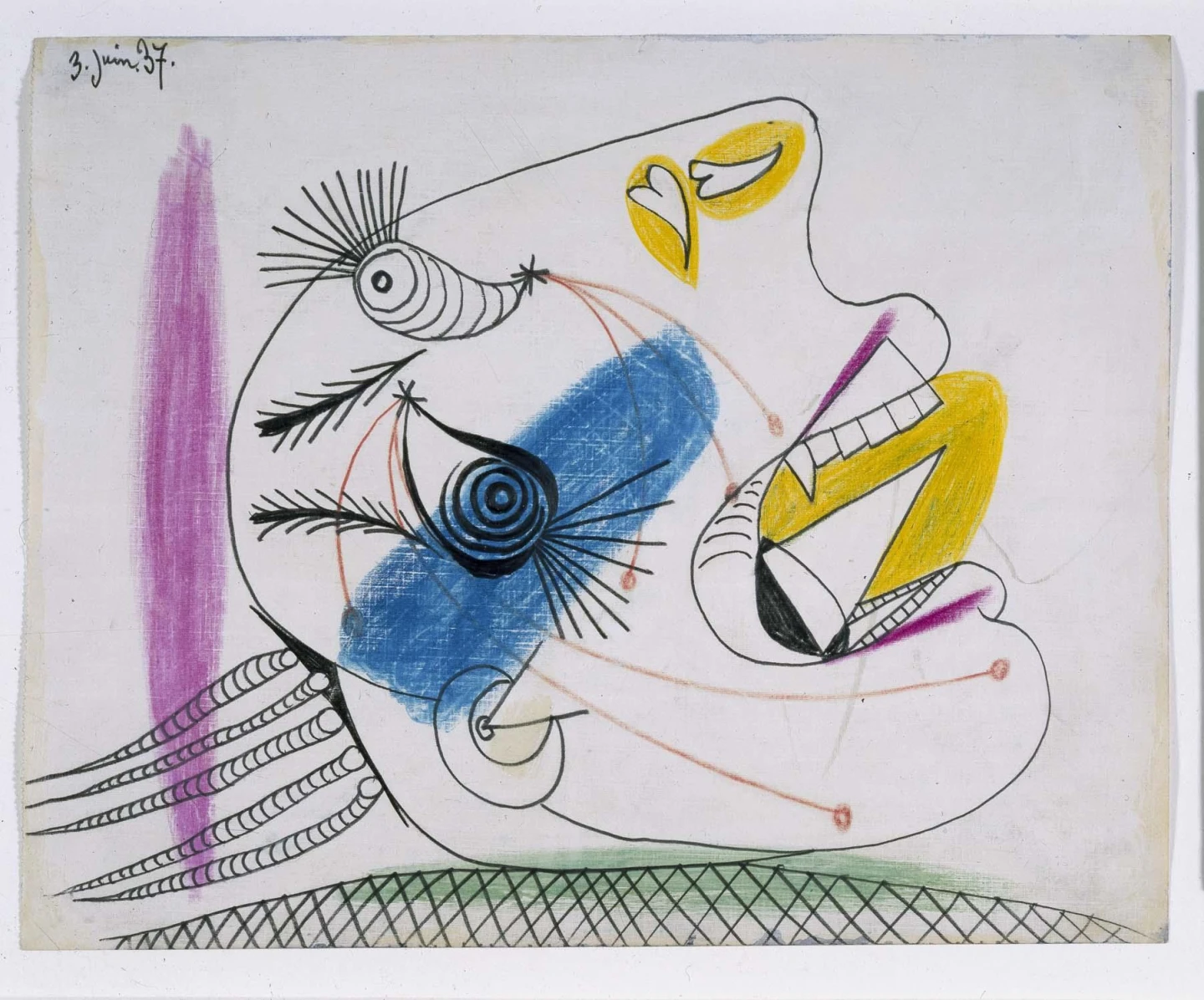A Century of Picasso

<p></p>
The first chapter, entitled “Ultra Threshold”, spans from 1919 to 1925 and features works by Picasso, demonstrating the move from Analytical Cubism to Synthetic Cubism. The two basic approaches presented consist of the dialogue between the work of Juan Gris and that of Picasso (1912-1918) and the break-away acknowledged by surrealists in Juan Miró's La Masía (1921-1922). The sculptors Manuel Hugué and Pablo Gargallo are included as precursors.
The “fertile years” stretch from the second half of the Twenties until the Spanish Civil War, with 1925 as the key date for the beginning of the avant-garde in Spain. This is when the “School of Paris” is formed, when Picasso and Miró are working full throttle and when veteran avant-garde artists such as Julio González, Joaquín Torres García and Pablo Gargallo join the surrealist group, made up of Salvador Dalí, Luis Buñuel and Oscar Domínguez. This chapter in the exhibition is closed out by the presence of Spanish artists Francisco Bores, Pancho Cossío, Luis Fernández and Manuel Díaz Caneja, who operate on the margins of organised ensembles.
In the spring of 1937 Picasso is commissioned by Government of the Second Republic to paint Guernica (link to work) for the Spanish Pavilion in the Paris International Exhibition. This is the context surrounding the section The Shadow of the War, the period that takes the exhibition to 1947 and divides the History of 20th Century Spanish Art in two. A series of drawings from the Picasso's Guernica Cycle and the work of Julio González, Luis Fernández, Oscar Domínguez and Dalí are displayed as an example of the impact of historical events on Spanish artists. Once the war is over a new art scene emerges. The series Constellations and Barcelona by Juan Miró take centre stage in the chapter “Paths”, which spans from 1942 to 1964. Certain movements such as Geometric Abstraction and Surrealism either survive or are reconfigured, while others, like the Escuela de Altamira (Altimira School), involving predominant figures such as Ángel Ferrant, Dau al Set, and headed by Antoni Tàpies, or the emblematic El Paso Group with Antonio Saura, Manuel Millares, Rafael Canogar and Martin Chirino emerge.
The exhibition concludes with the chapter “Disdain for the Rule”, in reference to the rebellious spirit of the Sixties that pays no heed to classification. Eduardo Arroyo, the Equipo Crónica and Pablo Palazuelo feature alongside the artistic evolution of Picasso, Chillida, Tàpies and Saura, who challenge the uniformity of new international tastes.
A total of two hundred and fourteen works comprise the exhibition: one hundred and thirty paintings, forty-four sculptures and forty graphic art pieces, with fifty-two belonging to Pablo Picasso, the common thread between the different chapters in the exhibition.
Artists
Musée d'Art Moderne de la Ville de Paris (October 8, 1987 - January 3, 1988)
Organised by
Centro Nacional de exposiciones
Image gallery
